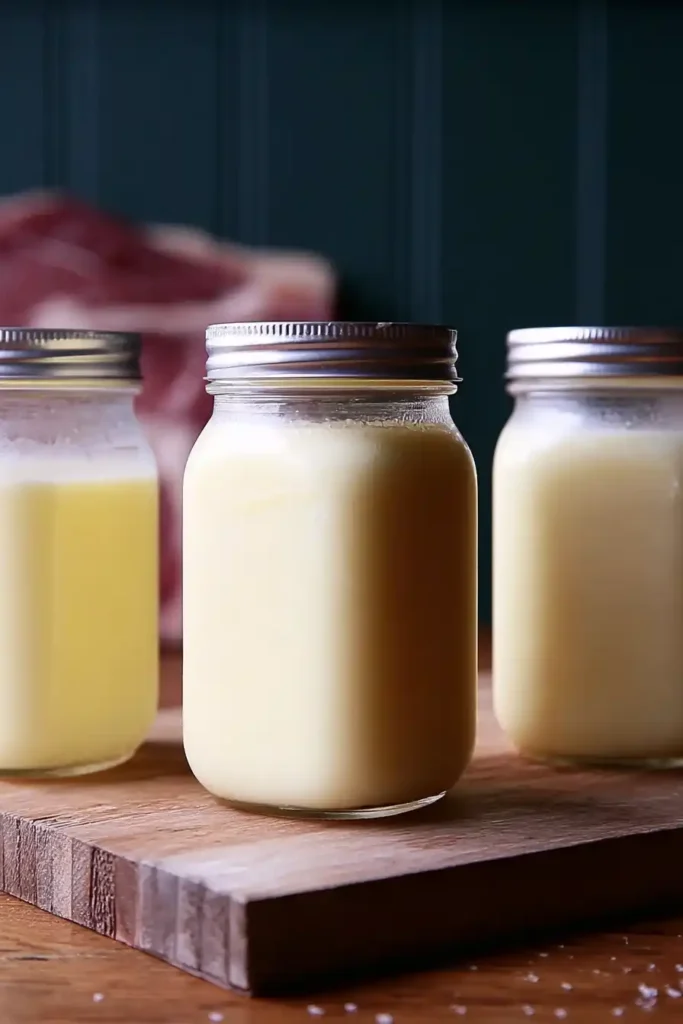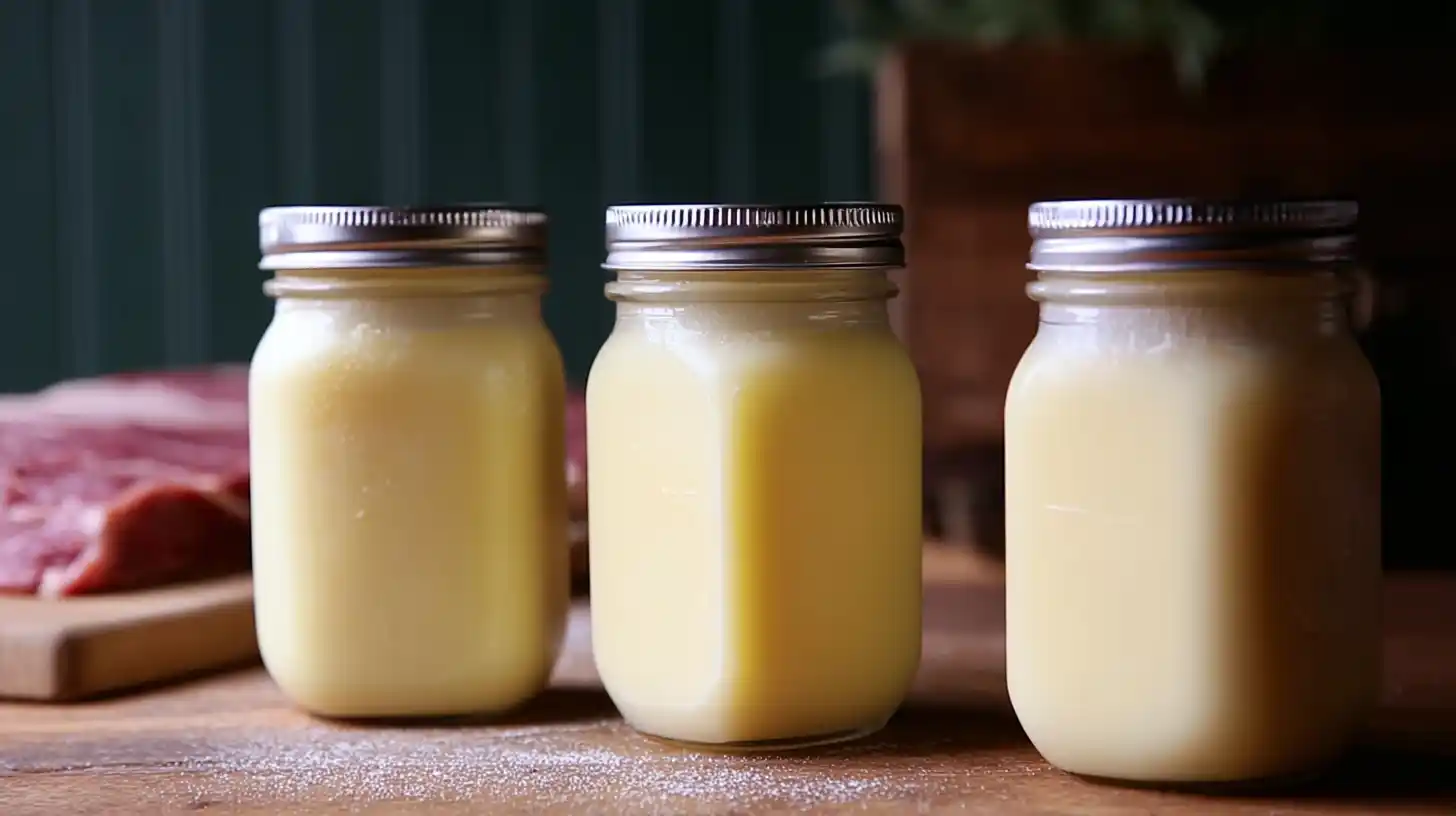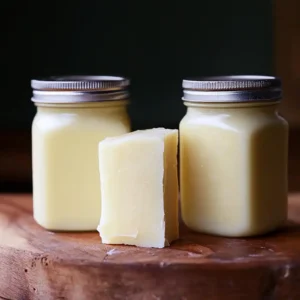Beef tallow is making a big comeback in modern kitchens, and for good reason. Once a staple in traditional cooking, this golden fat is prized for its rich flavor, high smoke point, and long shelf life. From crispy roasted potatoes to flaky pie crusts, beef tallow transforms ordinary dishes into something extraordinary. Best of all, it’s simple to make right at home with just one ingredient—beef fat. If you’ve ever wondered how to render your own beef tallow, this step-by-step recipe will guide you through the process.

Why You’ll Love This Beef Tallow Recipe
- Easy to Make: Just beef fat and a little patience—no special tools required.
- Budget-Friendly: A great way to use leftover fat trimmings instead of tossing them.
- Long Shelf Life: Properly stored, beef tallow lasts for months without spoiling.
- Versatile in Cooking: Perfect for frying, roasting, or even baking.
- Nutrient-Rich: Packed with healthy fats and free from artificial additives.
Ingredients Needed for Perfect Beef Tallow
- Beef Fat (Suet or Trimmings): The base ingredient, providing the pure fat that melts down into tallow. Choose high-quality, grass-fed fat for best flavor.
- Water (Optional): Helps prevent burning during the initial rendering process.
Step-by-Step Instructions to Make Beef Tallow
- Prepare the Fat: Trim away any leftover meat or blood spots from the beef fat. Cut it into small cubes or pulse in a food processor.
- Slow Render: Place the fat pieces in a heavy pot or slow cooker. Add a splash of water to prevent sticking.
- Low Heat Cooking: Simmer on the lowest heat setting. Stir occasionally as the fat melts and turns liquid.
- Strain the Tallow: Once the fat has fully rendered and only crispy bits remain, carefully pour the liquid through a fine mesh strainer or cheesecloth.
- Cool and Store: Pour into clean glass jars. Let it cool until solid and creamy. Seal with lids and store in a cool, dark place.
Expert Tip: Rendering low and slow prevents burnt flavors and ensures a clean, mild tallow.
Recipe Tips & Variations
- For Extra Flavor: Add herbs like rosemary or thyme while rendering, then strain them out for an aromatic tallow.
- Use a Slow Cooker: Set on low for a hands-off method that avoids scorching.
- Crispy Cracklings: Save the leftover browned bits (cracklings) for salads, soups, or snacking.
How to Store & Reheat
- Room Temperature: Store in sealed jars in a dark pantry for up to 3 months.
- Refrigerator: Keeps fresh for 6–12 months.
- Freezer: Extend shelf life to a year or more.
To reuse, simply scoop out the desired amount and melt over low heat.
Similar Recipes You’ll Love
If you enjoyed learning how to make beef tallow, you’ll love trying out a few more hearty beef dishes from my kitchen. For a rich, French-inspired classic, check out this Beef Bourguignon. If you’re in the mood for something fun and cheesy, these Golden Crust Cheesy Beef Bombs are an absolute crowd-pleaser. And for a comforting family dinner, you can’t go wrong with a tender Beef Roast Pot that’s perfect for Sundays at home.

Frequently Asked Questions (FAQ)
Q: What is beef tallow used for?
A: Beef tallow is ideal for frying, roasting, baking, and even making homemade candles or soaps.
Q: Does beef tallow taste like beef?
A: Properly rendered tallow has a mild, clean flavor that doesn’t overpower dishes.
Q: Is beef tallow healthy?
A: When sourced from grass-fed beef, tallow contains healthy fats and fat-soluble vitamins. Like all fats, enjoy it in moderation.
Q: Can I reuse beef tallow after frying?
A: Yes! Strain it after use to remove food particles, then store it for the next round of cooking.
Homemade beef tallow is an old-fashioned kitchen staple that deserves a spot in modern cooking. It’s easy, affordable, and incredibly versatile, adding both flavor and function to your meals. Try making a batch today and discover why beef tallow has been loved for centuries. Don’t forget to share your experience in the comments and follow along for more traditional and modern recipes!
Beef Tallow Recipe
Ingredients
- 4 pounds beef fat suet or trimmings, cleaned and chopped
- ½ cup water optional, prevents scorching during rendering
Instructions
- Trim any meat or blood spots from beef fat. Chop into small cubes.
- Place fat in a heavy-bottomed pot or slow cooker. Add water if using.
- Cook on low heat, stirring occasionally, until fat fully melts and solids turn crispy.
- Strain liquid fat through cheesecloth or fine mesh into clean jars.
- Let cool at room temperature until creamy white and solid. Seal tightly.


